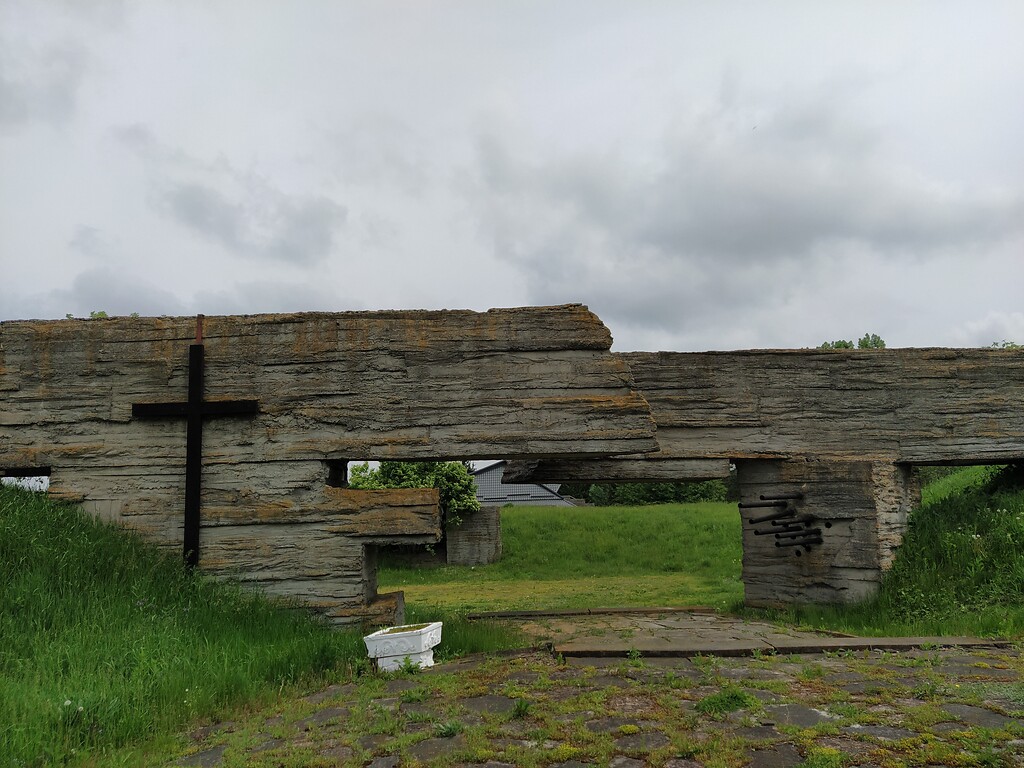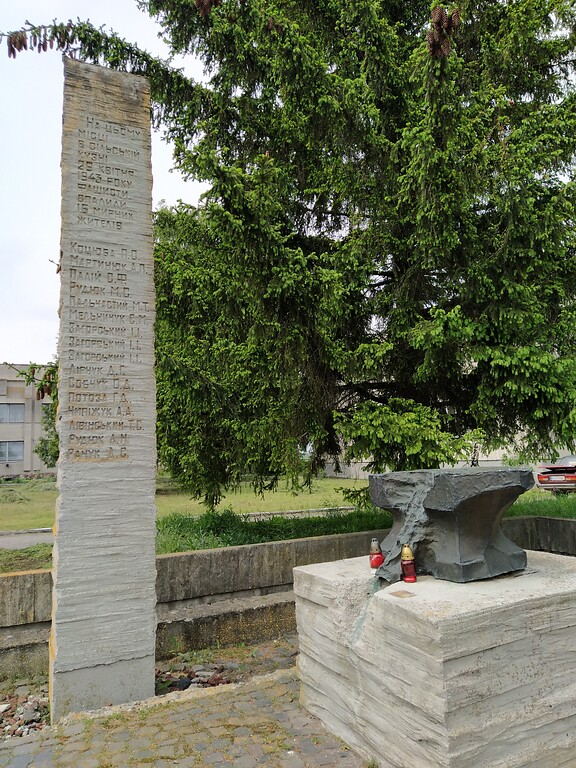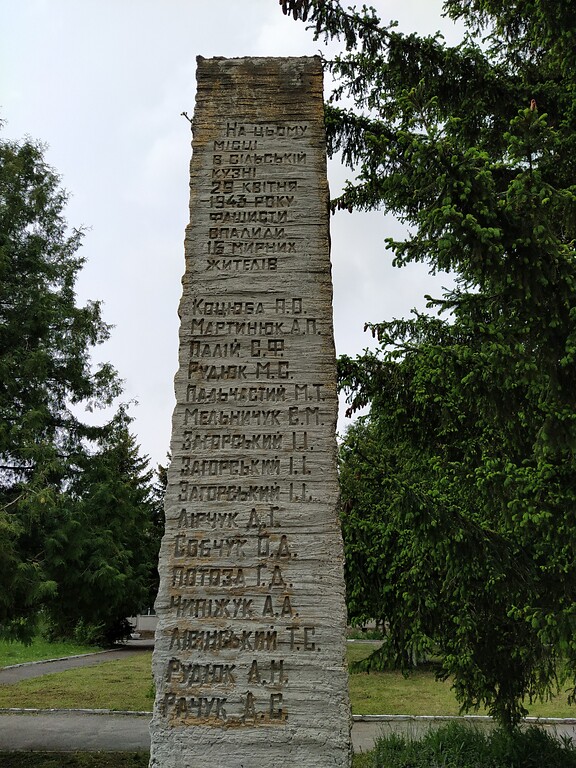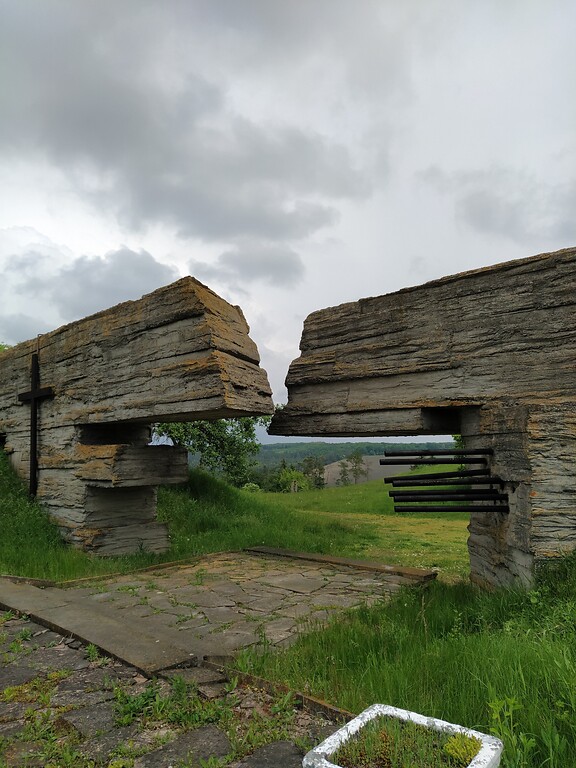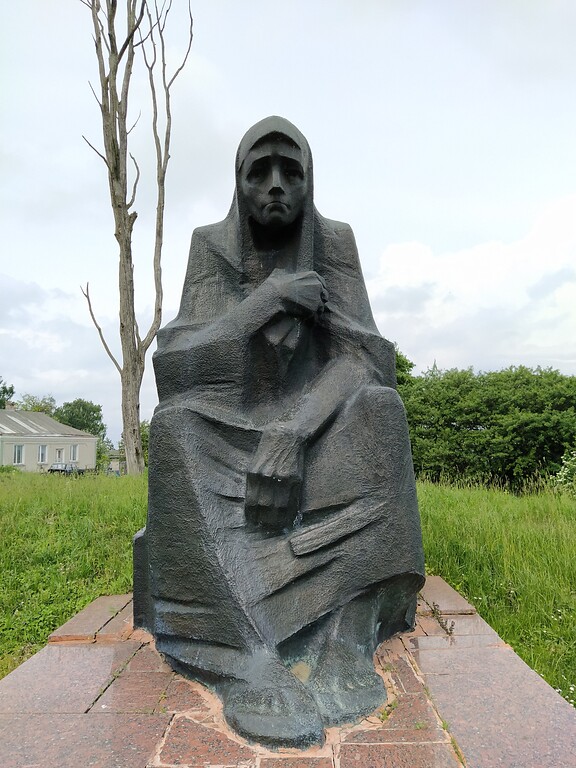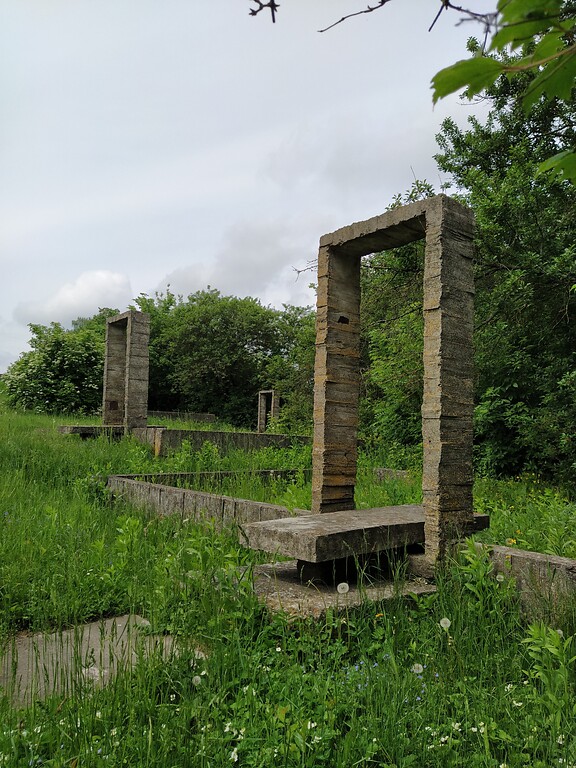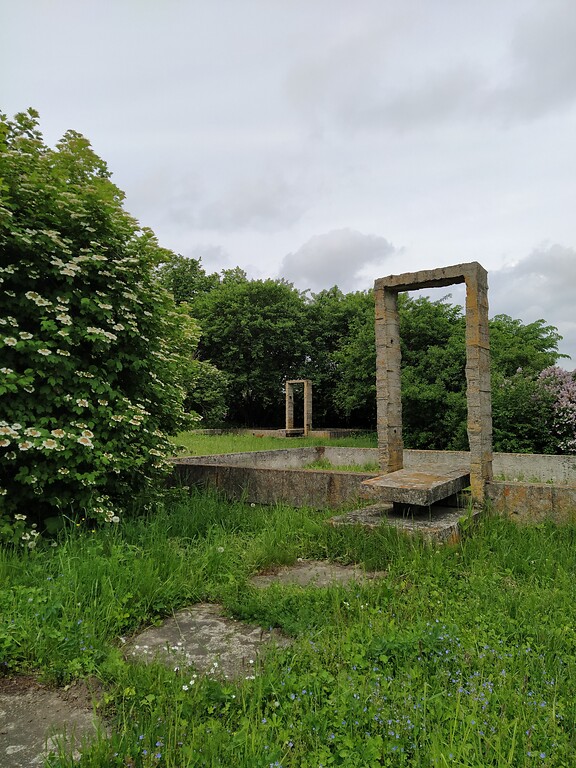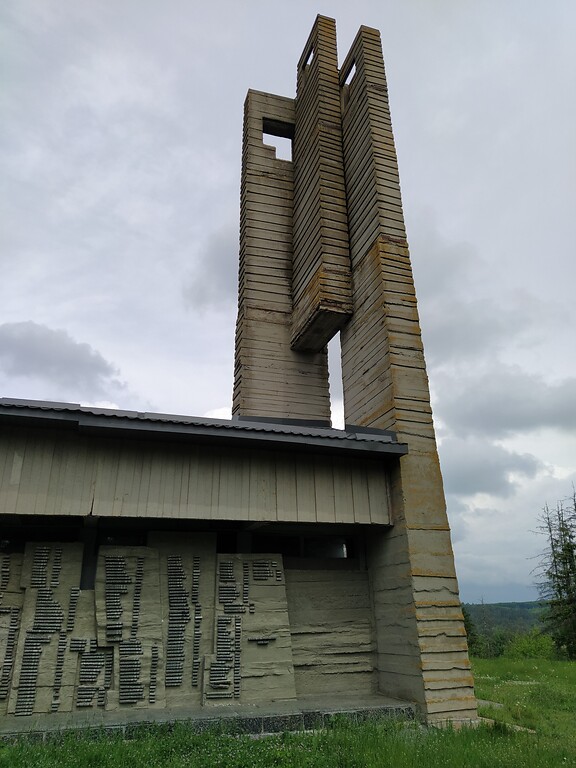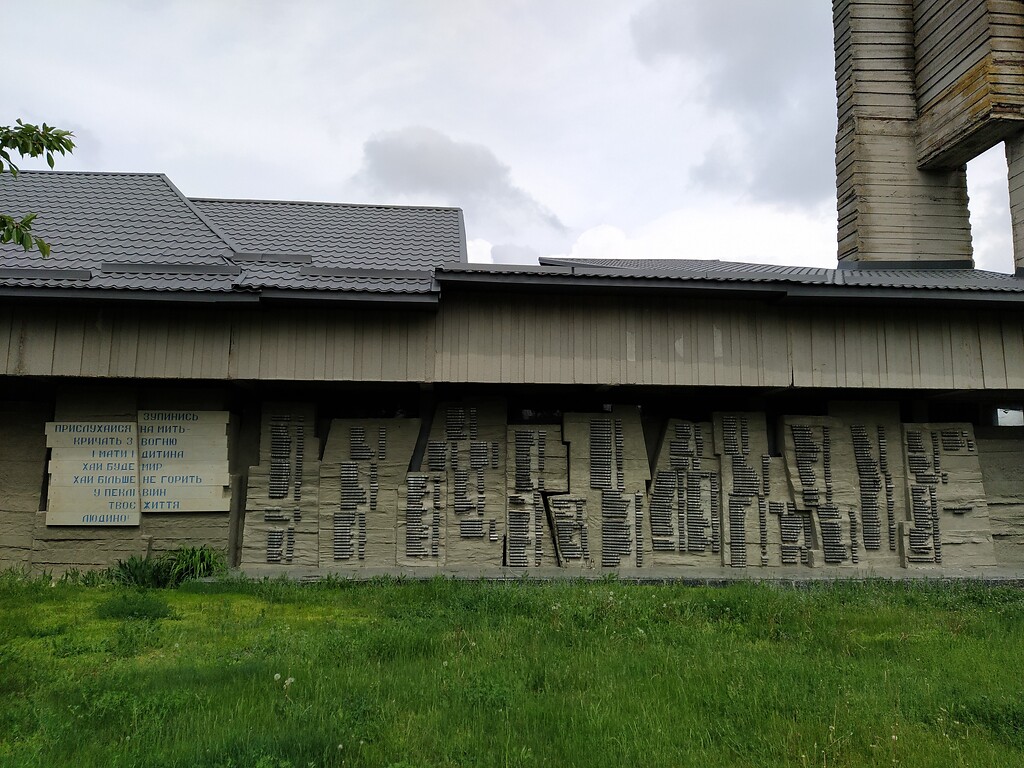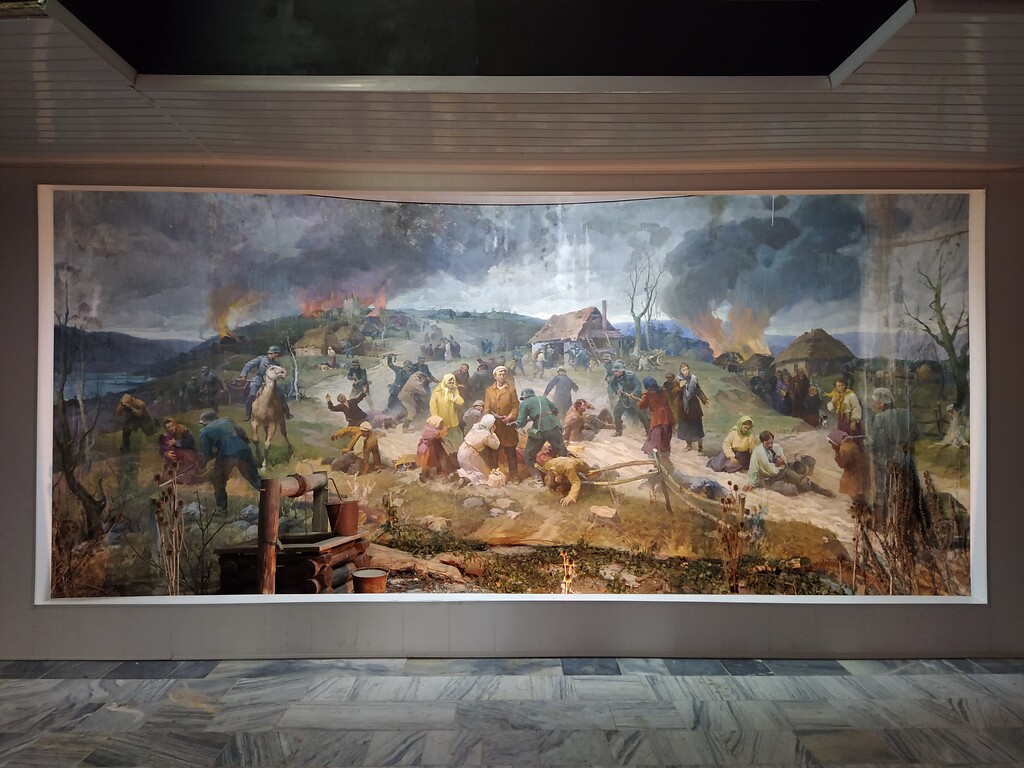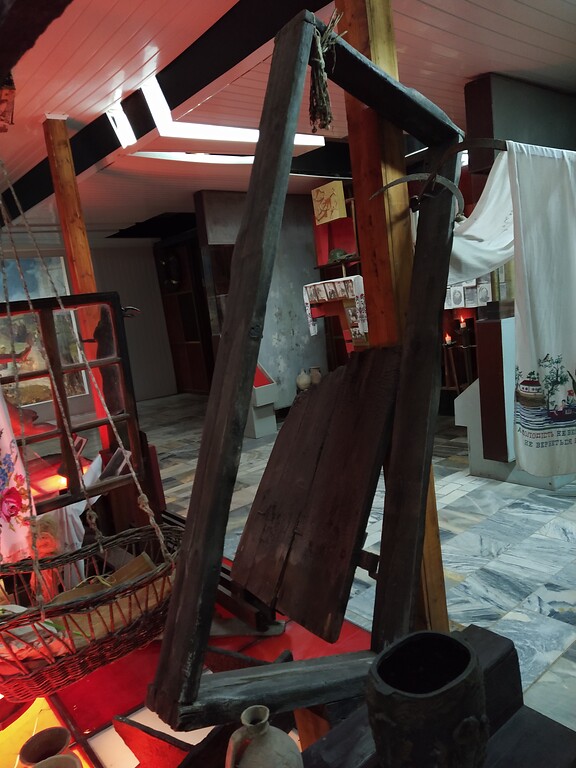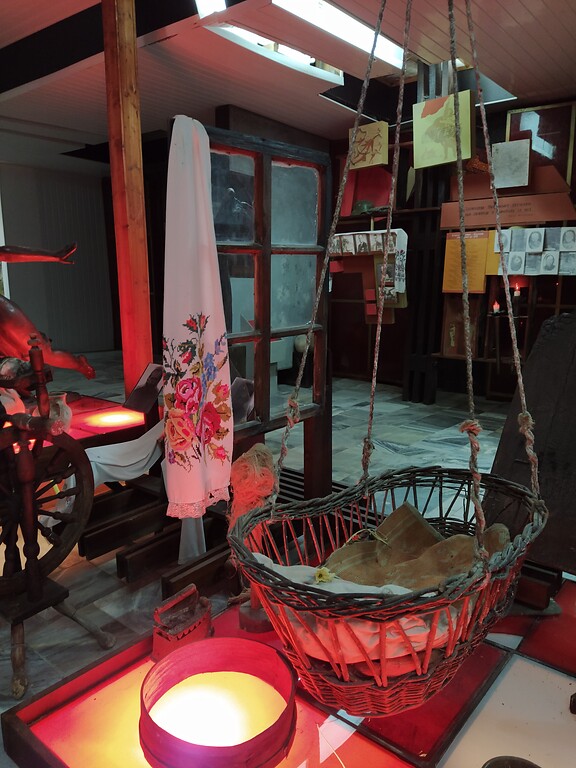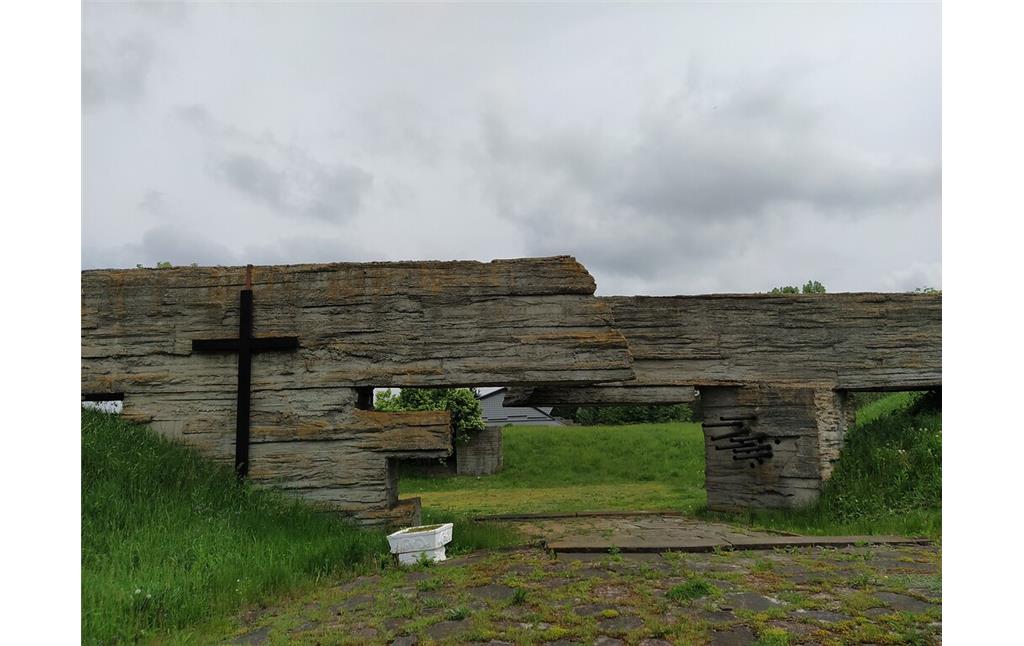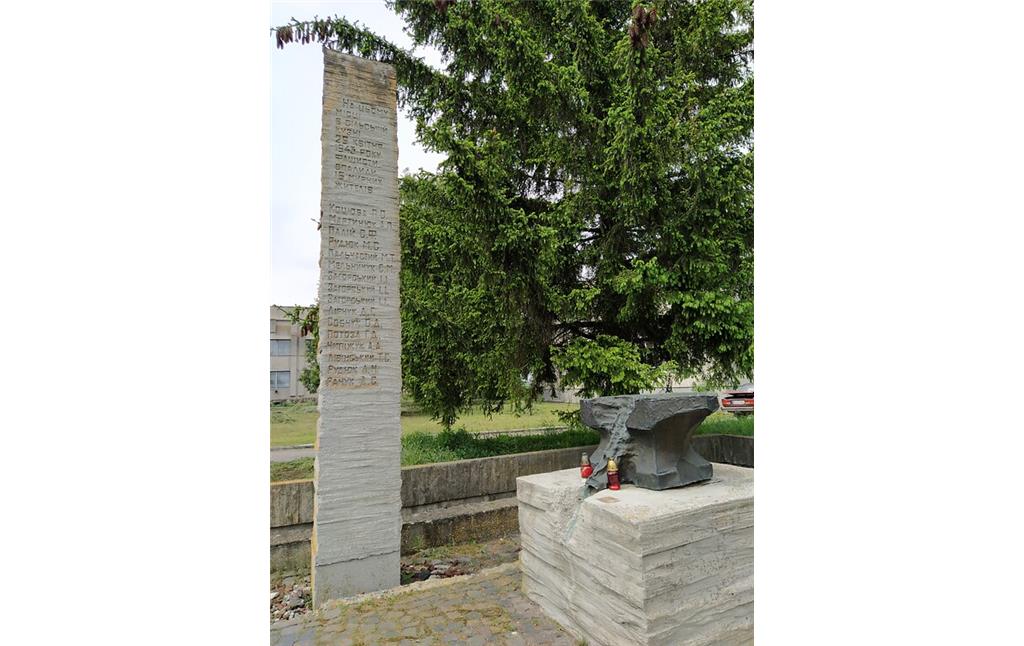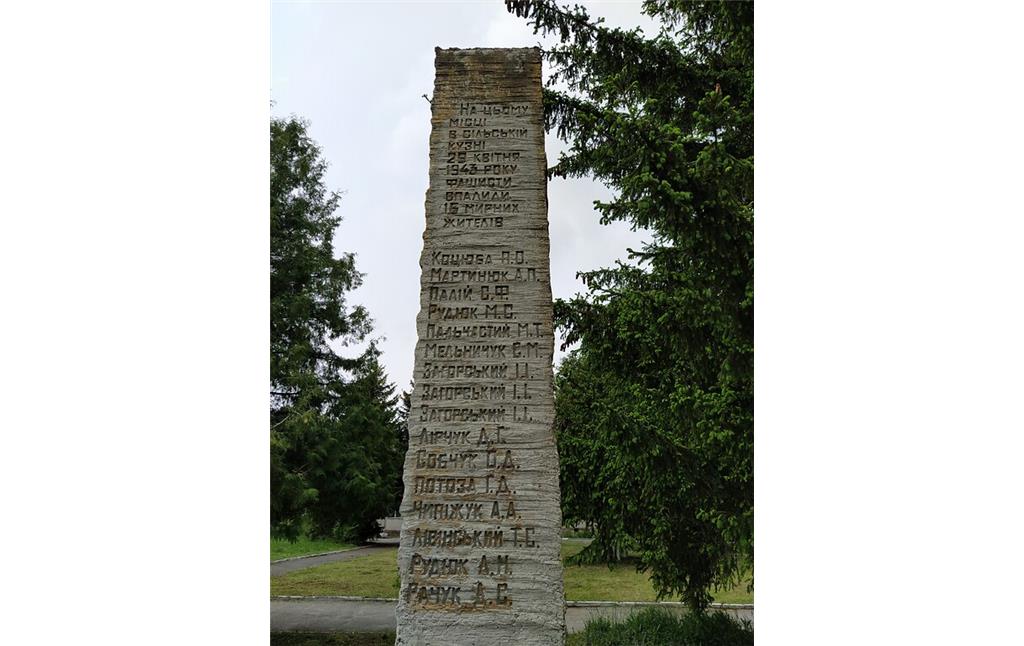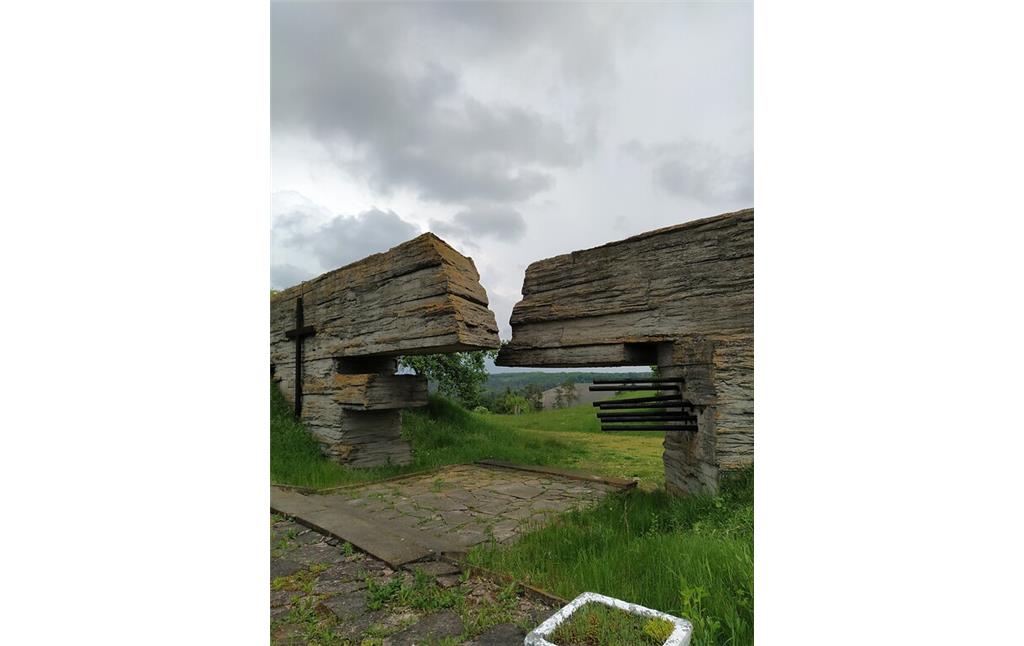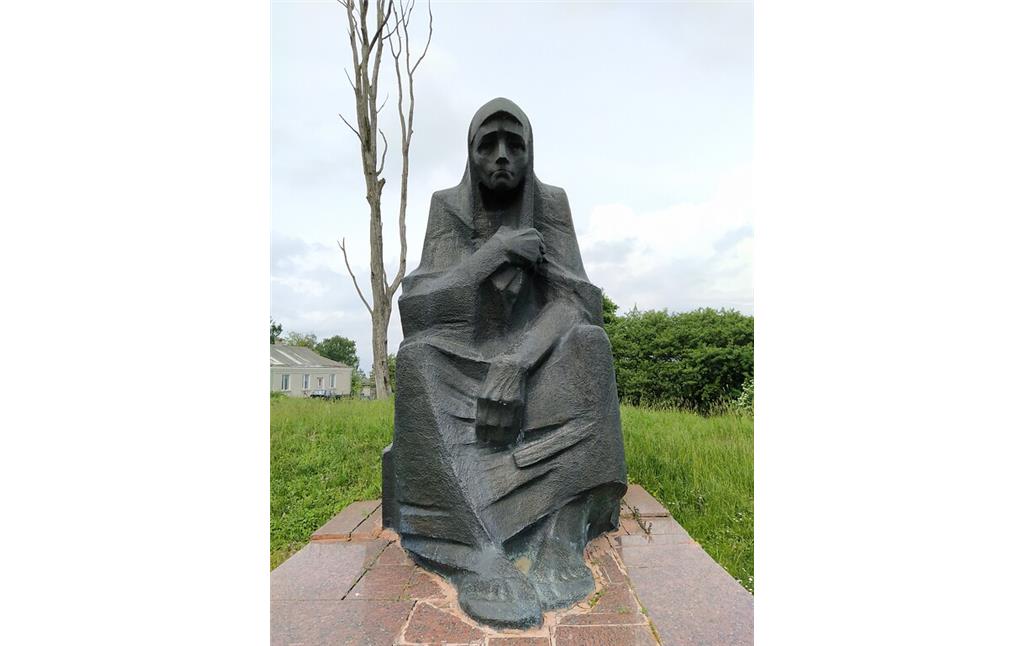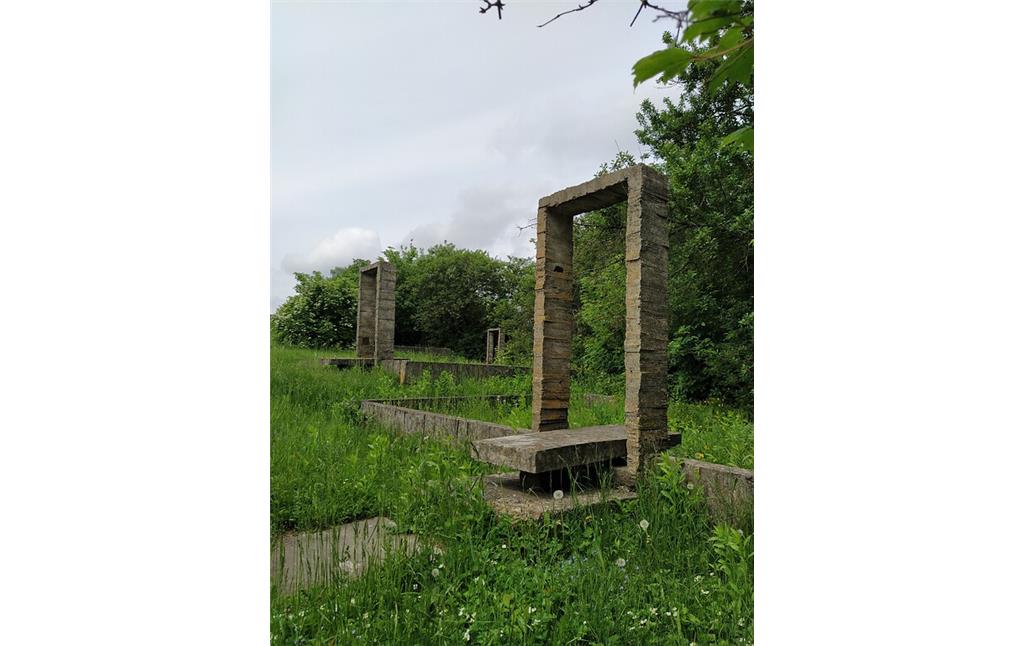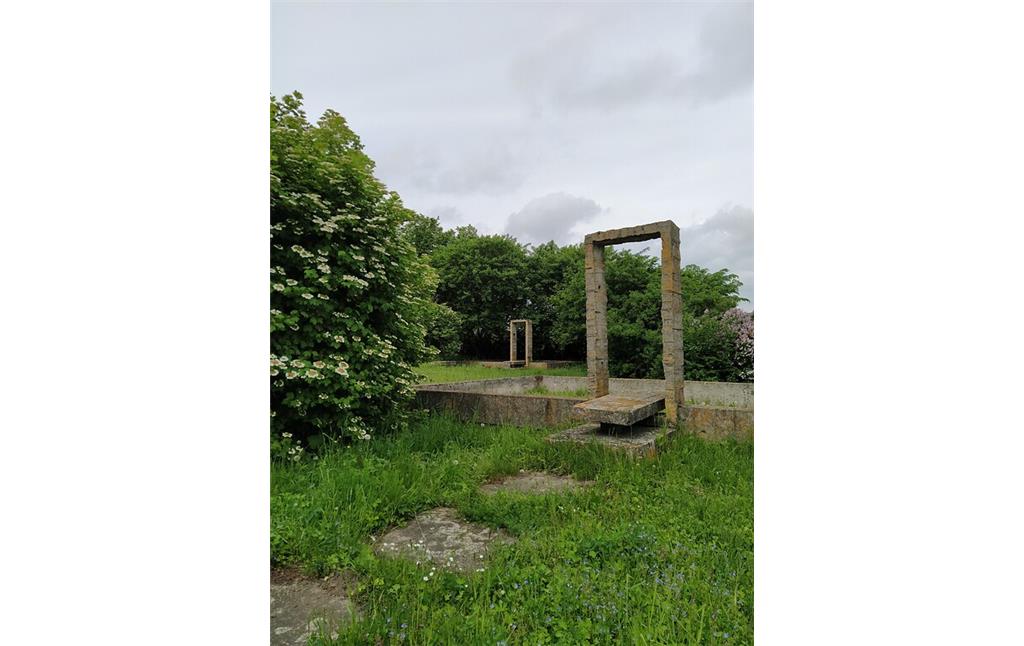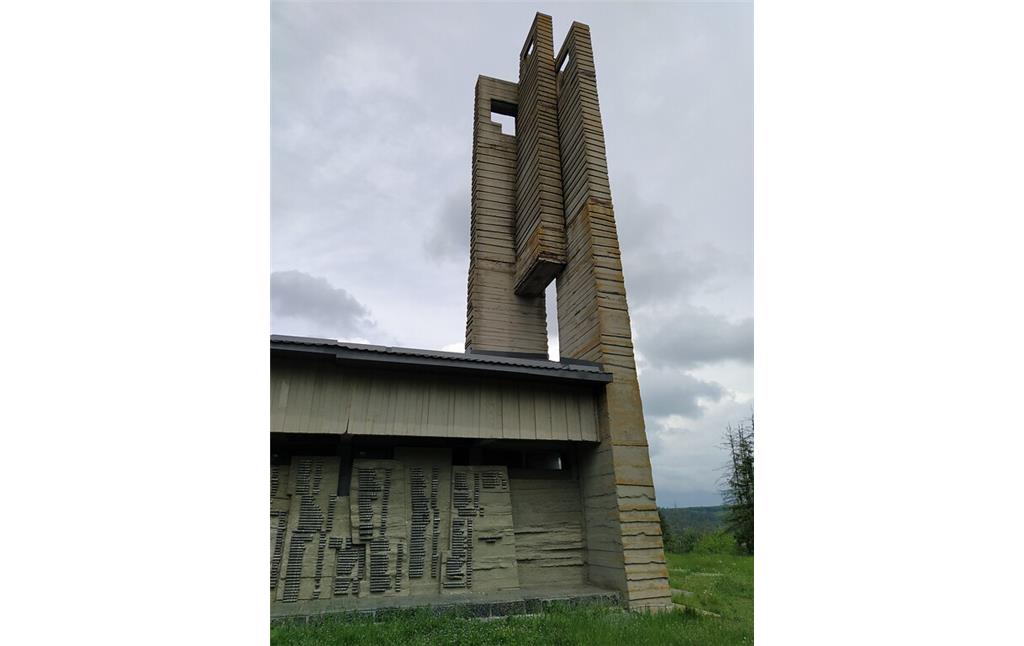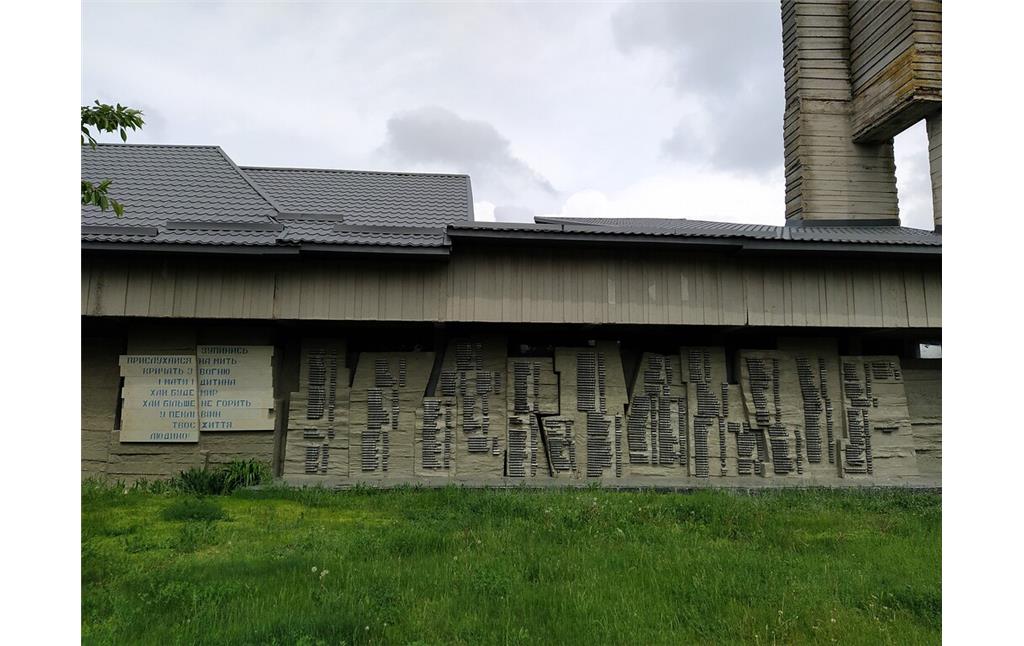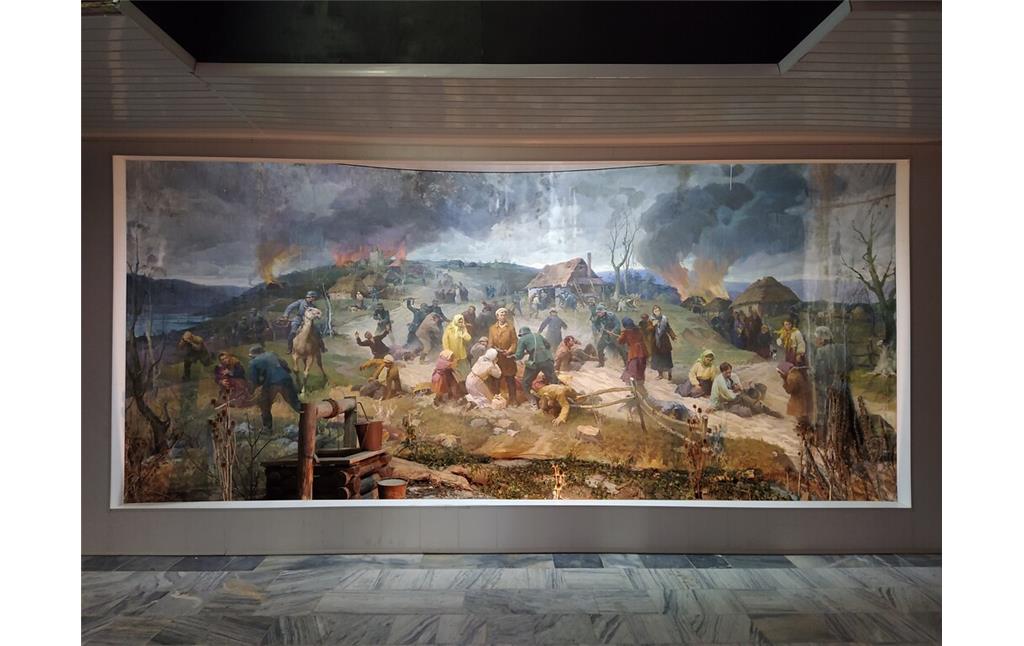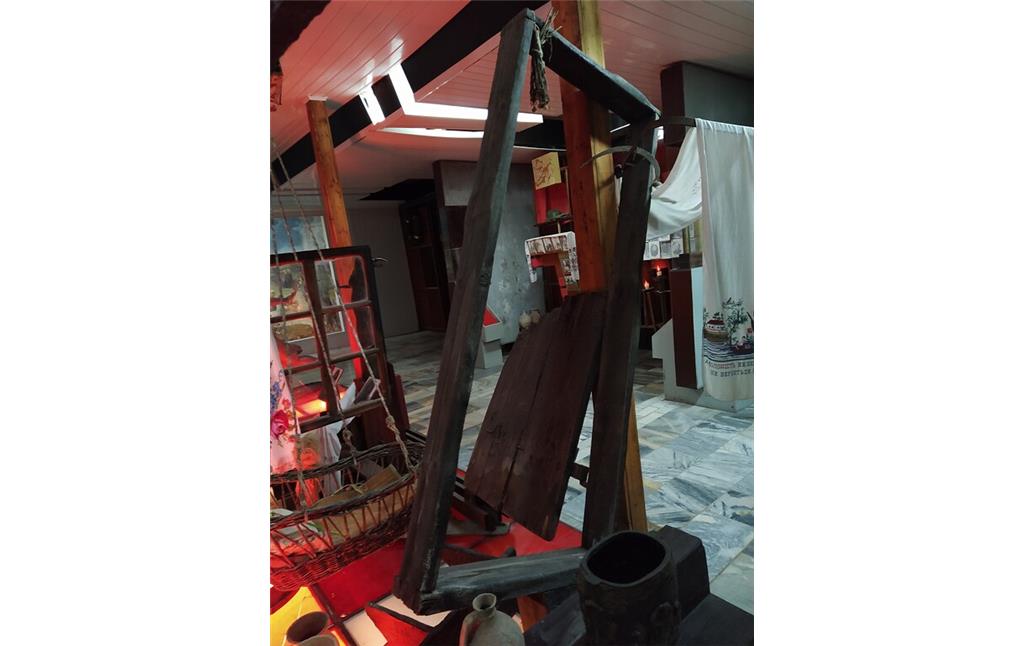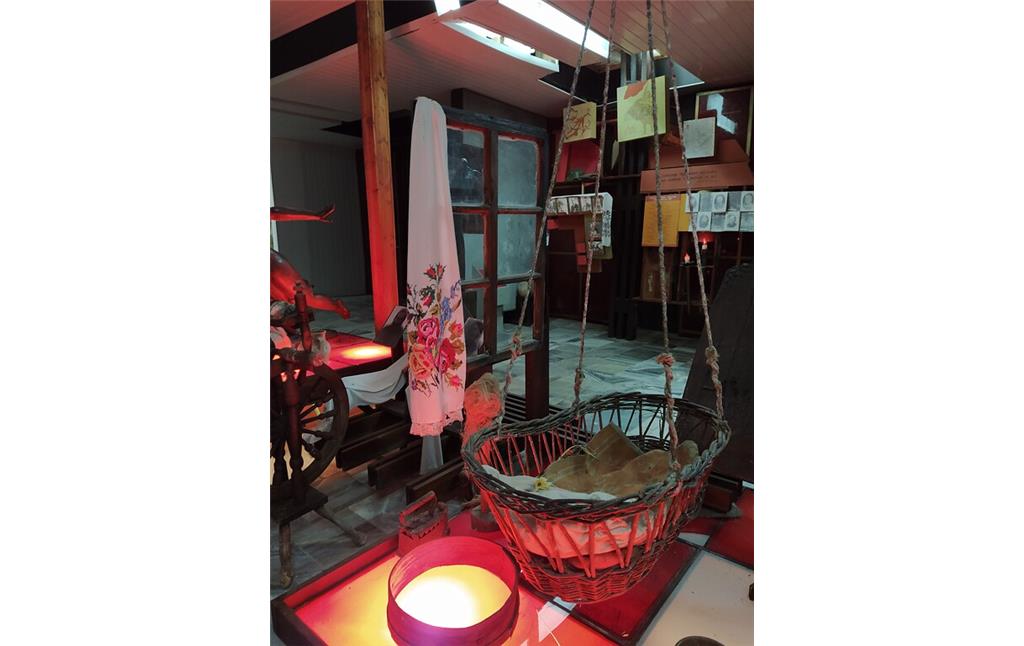Memorial complex-museum „Molotkiv Tragedy“
Gedenkkomplex und Museum „Tragödie von Molotkiv“
Schlagwörter:
Fachsicht(en): Archäologie, Landeskunde, Museen
Gemeinde(n):
Koordinate WGS84 49° 49′ 6,66″ N: 26° 11′ 52,56″ O 49,81852°N: 26,19793°O
Koordinate UTM 35.442.302,41 m: 5.518.761,49 m
Koordinate Gauss/Krüger 9.442.539,48 m: 5.520.499,89 m
-
Concrete wall at the entrance to the complex, symbolizing the village surrounded by Nazi-German forces
- Copyright-Hinweis:
- Yulia Pogranychna / Lviv Polytechnic National University
- Fotograf/Urheber:
- Yulia Pogranychna
- Medientyp:
- Bild
-
Mermorial stele "Forge" in the Memorial complex-museum Molotkiv Tragedy
- Copyright-Hinweis:
- Yulia Pogranychna / Lviv Polytechnic National University
- Fotograf/Urheber:
- Yulia Pogranychna
- Medientyp:
- Bild
-
Mermorial stele "Forge" in the Memorial complex-museum Molotkiv Tragedy
- Copyright-Hinweis:
- Yulia Pogranychna / Lviv Polytechnic National University
- Fotograf/Urheber:
- Yulia Pogranychna
- Medientyp:
- Bild
-
Concrete wall at the entrance to the complex, symbolizing the village surrounded by Nazi-German forces
- Copyright-Hinweis:
- Yulia Pogranychna / Lviv Polytechnic National University
- Fotograf/Urheber:
- Yulia Pogranychna
- Medientyp:
- Bild
-
Sculpture "Mother" and charred tree "Witness of tragedy"
- Copyright-Hinweis:
- Yulia Pogranychna / Lviv Polytechnic National University
- Fotograf/Urheber:
- Yulia Pogranychna
- Medientyp:
- Bild
-
"Street of the burned village" - replica of burned houses-foundations and jambs
- Copyright-Hinweis:
- Yulia Pogranychna / Lviv Polytechnic National University
- Fotograf/Urheber:
- Yulia Pogranychna
- Medientyp:
- Bild
-
"Street of the burned village" - replica of burned houses-foundations and jambs
- Copyright-Hinweis:
- Yulia Pogranychna / Lviv Polytechnic National University
- Fotograf/Urheber:
- Yulia Pogranychna
- Medientyp:
- Bild
-
The composition "Memory", which symbolizes the murdered family: father, mother and child
- Copyright-Hinweis:
- Yulia Pogranychna / Lviv Polytechnic National University
- Fotograf/Urheber:
- Yulia Pogranychna
- Medientyp:
- Bild
-
"Memory wall" including the names of the killed inhabitants
- Copyright-Hinweis:
- Yulia Pogranychna / Lviv Polytechnic National University
- Fotograf/Urheber:
- Yulia Pogranychna
- Medientyp:
- Bild
-
Diorama "The Molotkiv tragedy" from Stepan Nechay, an artist from Ternopil
- Copyright-Hinweis:
- Yulia Pogranychna / Lviv Polytechnic National University
- Fotograf/Urheber:
- Yulia Pogranychna
- Medientyp:
- Bild
-
Еlements of a burned house in the museum
- Copyright-Hinweis:
- Yulia Pogranychna / Lviv Polytechnic National University
- Fotograf/Urheber:
- Yulia Pogranychna
- Medientyp:
- Bild
-
Еlements of a burned house in the museum
- Copyright-Hinweis:
- Yulia Pogranychna / Lviv Polytechnic National University
- Fotograf/Urheber:
- Yulia Pogranychna
- Medientyp:
- Bild
For the 40th anniversary of victory of the Second World War (also called „the Great Patriotic War” in the Soviet Union), on May 8, 1985, a memorial complex was opened in Molotkiv. The Molotkiv Tragedy Museum is a part of it. For a long time, there was a local history museum in the village run voluntarily. Local enthusiasts carefully collected every information related to the ancient history of the village, especially its April tragedy. Written references were supplemented by the testimonies of witnesses who managed to survive. It was these materials that formed the basis of the exposition of the Molotkiv Tragedy Museum.
Exposition
The Molotkiv Tragedy Museum has an unconventionally designed interior. The Ternopil artists Bohdan Boshko and Stepan Mamchur (born in 1949) used fragments and details of an ordinary village house. Such elements carry not only artistic and emotional value but also a semantic one.
There is an old broken window in front of the entrance. It is associated with the war that destroyed not only the homes but also people’s lives.
From the first days of the war, more than thirty Molotkiv residents went to the battlefield. And on July 7, 1941, Nazi-Germany invaded the village. The slightest violation of the “New Order” led to capital punishment.
In the exhibition, next to the barbed wire, there is an occupation authorities’ newspaper called „Kremianetsky Visnyk”. The newspaper contains orders demanding complete slave obedience, and there was a promised death for the slightest violation. There were a lot of similar ads in Molotkiv at that time.
The Molotkiv residents did not want to work for the invaders. They sabotaged the orders of the occupation authorities in every possible way. They burned bread, buried grain, evaded paying taxes, and avoided being taken to hard labor in Germany.
One of the lists of “Workers to Germany” dated May 12, 1942, can be seen in the museum. Nineteen people were listed there. Similar lists were compiled repeatedly. But often those who were chosen to go to Germany knew it in advance. In order to avoid being sent to the German Reich, people hid in the nearby forests or in local farms. From a large village (before the war, 1,510 people lived in Molotkiv), the Nazis managed to take out only 47 people, 40 of whom did not return.
When the next list campaign failed, the Nazis decided to take revenge on the rebellious villagers. Hauptmann Hans Ferster led the punitive detachment. In the Molotkiv Tragedy Museum exists a record of this event: „In the morning of April 29, 1943, fascists in twelve cars, an armored truck and a tankette surrounded the village. Some of them sat down in a ditch near the road to (the village) Bilozirka. The other group was approaching from the opposite side of the village, over the dam. The Nazis also controlled the right bank of Zherd (river). In addition, they supervised other roads from Molotkiv. Thus, a deadly circle surrounded the village”.
The circle began to shrink after a signal mortar fire. There are photos of survivors on the museum stands. Their stories, recorded in the museum Book Of Memory, formed the basis of the museum exposition. The Book Of Memory keeps the terrible events of that April day when the German tortured and killed 617 people.
Today, candles flicker in front of the photos of the Nazi massacre victims. Demyd Hryhorovych Rudiuk and his two sons - Yevdokym and Maksym, brothers Kharyton and Ihor Kravchuk, Zakhar Kalenykovych Rudiuk, Serhii Poliekha, Kharyton Palchasty, Maria Rachuk, Fadey Mazur, Vasyl Stadnyk... Elderly, people in their prime, children. Different years of birth, however, the same time of death - April 29, 1943.
A burned icon is located next to the photos of the deceased. Even it became one of the victims of the Molotkiv tragedy. There is a testimony of Maria Kozytska in the Book Of Memory: “When they heard that the fascists were surrounding the village, the mother rushed to the father: „Let’s save ourselves!” And he just frowned: “We didn't do anything wrong to anyone, we worked all our lives honestly, so why should we be killed?” Half an hour before his martyrdom, he still tried to evaluate everything according to the norms of human morality. He didn't know and couldn't know about Auschwitz and Dachau, Majdanek and Treblinka, Buchenwald and Mauthausen. He hadn’t heard about crematoria. And when he saw that the neighboring house was on fire, he began to take out grain bags - he was saving bread. The mother took the religious icon and walked around the house with it, as if spellbound, saying something. „When I saw the Hitlerist coming to the yard, I managed to hide behind the bushes by the river. The fascist pushed my father with the weapon and put him against the wall. He called the mother, and she approached, as she was, with the icon in front of her. The killer pulled the trigger of the weapon and fired at the legs of both of them. Father and mother fell. And the monster calmly took a bunch of straw from the roof, then put the second one on them and set fire to it. My father could no longer stand up, but my mother did, burning like a candle, and, still holding the icon in front of her, shouted: “People, help!”. And fell. And burned out”.
Witnesses recalled that a lot of the Molotkiv villagers tried to defend themselves with pitchforks and shovels. They went with scythes, axes, poles in their hands against the shooters. But the forces were too unequal.
On the evening of April 29, the Nazis escorted the survived villagers to the cemetery. There were more than a hundred people. With the help of the interpreter, the villagers were told that the Nazis would shoot them, but then a German informed them that the Greater German Reich gave life to each of them. They needed to kneel and thank the Nazi for saving, kiss the officers’ feet. And in the morning, everyone had to arrive at the village Lanivtsi to go to work in Germany. And everyone who didn't come would be killed. The Nazis waited in vain: none of the Molotkiv inhabitants arrived at the commandant’s office the next day. Even being burned down, the village remained unconquered by the invaders.
Some documentary photos can be found in the museum, next to the diorama. An unknown photographer made them the day after the incineration of the village. The pictures demonstrate the ruins, ashes, corpses among the site of the fire. From 358 houses, 353 werde burned down, 617 inhabitants died. It was the finale of the Molotkiv tragedy. And the Nazis continued to come there to loot the destroyed village completely. In total, 197 horses, 473 cows, 293 sheep, and 26 carts were withdrawn for the „needs of the Reich”.
At the Nuremberg trials, two and a half years after the Molotkiv tragedy, the Nazi commanders who invaded the village on April 29, 1943, were making excuses. They said they were not guilty because they were only soldiers and obeyed the Führer’s order.
A large six-metre long and two-and-a-half-metre high diorama, “The Molotkiv Tragedy” reproduces one of the episodes of the bloody Nazi massacre. The entire cross wall in the museum is provided for it. Ternopil artist Stepan Nechay (1941-2003), the author, depicted the village engulfed by fire from where almost half of the village buildings are visible. Doomed people, floundering in flames, numb under the muzzles of Nazi weapons. The figure of an unconquered villager is in the center of the composition. What can he do, unarmed, against the destruction machine? But the hand tightly grabs the belt, his eyes are filled with revenge, and the man straightens his shoulders.
Memorial complex
For the 40th anniversary of victory in the Second World War, on May 8, 1985, a memorial complex was opened in Molotkiv. There is a commemorative sign „Forge” in front of the entrance to the main territory of the memorial complex (architect Ivan Osadchuk and sculptor Borys Rudy are its creators). It was built on the same site where the village blacksmith's forge was located until April 29, 1943. The Nazis gathered thirty men, used machine guns to push them into the blacksmith’s forge. Then they wrapped the windows and doors with barbed wire and set fire to the building. The names of those burned alive in the forge on that April day are engraved on the grey symbolic stone.
A large square in front of the memorial complex and two hills seem to separate today’s Molotkiv from Molotkiv in 1943. The massive grey wall above the entrance to the memorial complex symbolizes the encirclement of the village by the Nazis. It is forked, and both blocks go one after the other. It is how the punishers surrounded the helpless Molotkiv residents. The burden of this wall hanging over the head creates a sense of heaviness and hopelessness, which is reinforced by machine gun barrels protruding from the side of the concrete cube of the fortification.
There is a large stone at the beginning of the mournful road. The inscription carved there recalls the date of the Molotkiv destruction by the Nazis and the number of victims.
The symbolic street of death leads down and through time. Step by step until April 1943.
On the hill, from where the whole street is visible, there is a sculpture of a young woman. She crouched, bent over in grief; there is pain and sadness in her eyes. One hand is helplessly lowered, the other lies on the heart. This monument is the personification of the tragedy of the Molotkiv mothers, an impressive reminder of their tears and sadness. A black charred oak tree, which is a sad and truthful witness to the war, stands next to the sculpture of mother.
The symbolic street of the burned village depicts a semicircle. In the Belarussian house, during the memorial construction, stoves and chimneys were left on the site of the places. In Molotkiv, the burned houses are marked by the remains of foundations and jambs. There are no doors. Past the burned homes and the commemorative tables, a symbolic street leads to a building resembling a mausoleum. In fact, there is the Molotkiv Tragedy Museum. The entire memorial complex is visible from the observation deck. The hill that stretches from here to the main entrance symbolizes a mass grave. Moreover, three poles of different heights, which rise above the building of the museum and the entire memorial, depict the destroyed family of father, mother, and child. A long list of the deceased is on the memorial wall, at the foot of the poles.
(Yulia Pogranychna, Lviv Polytechnic National University, 2022)
Memorial complex-museum „Molotkiv Tragedy“
- Schlagwörter
- Ort
- 47451 Molotkiv
- Fachsicht(en)
- Archäologie, Landeskunde, Museen
- Erfassungsmaßstab
- i.d.R. 1:5.000 (größer als 1:20.000)
- Erfassungsmethode
- Literaturauswertung, Fernerkundung
- Historischer Zeitraum
- Beginn 1985
Empfohlene Zitierweise
- Urheberrechtlicher Hinweis
- Der hier präsentierte Inhalt ist urheberrechtlich geschützt. Die angezeigten Medien unterliegen möglicherweise zusätzlichen urheberrechtlichen Bedingungen, die an diesen ausgewiesen sind.
- Empfohlene Zitierweise
- „Memorial complex-museum „Molotkiv Tragedy“”. In: KuLaDig, Kultur.Landschaft.Digital. URL: https://www.kuladig.de/Objektansicht/KLD-335770 (Abgerufen: 3. Januar 2026)
